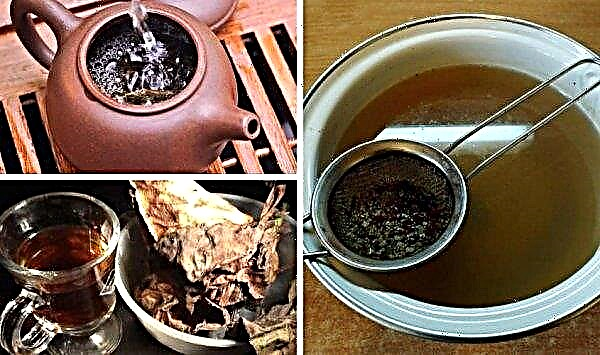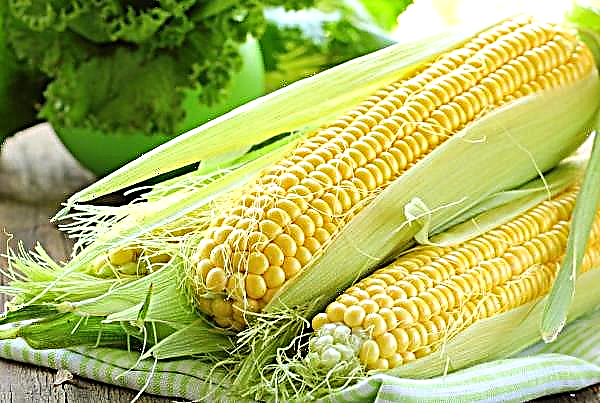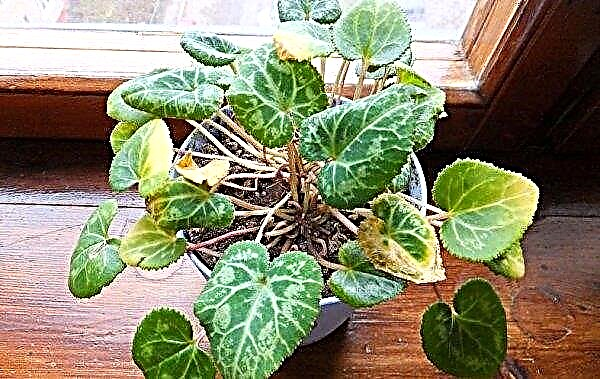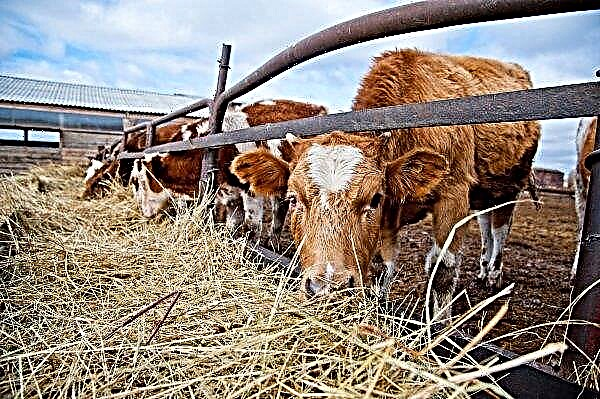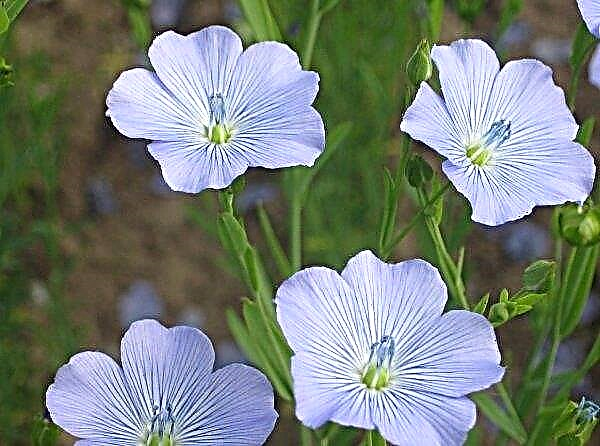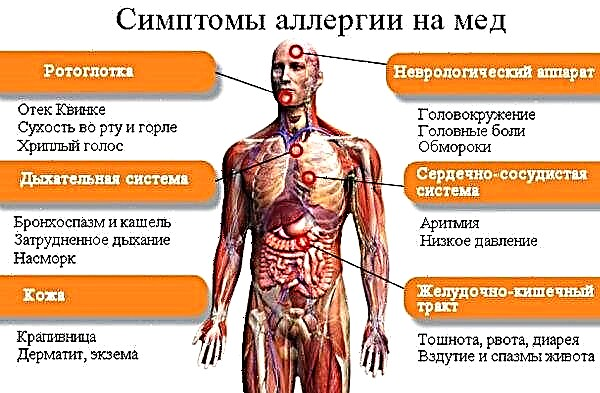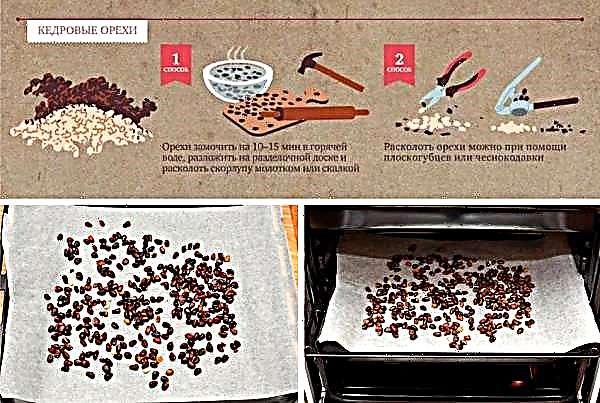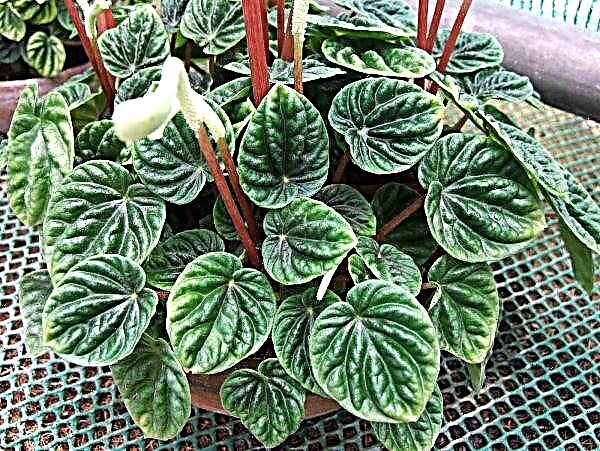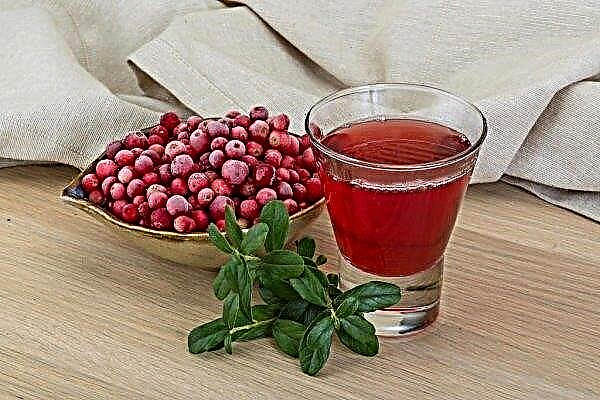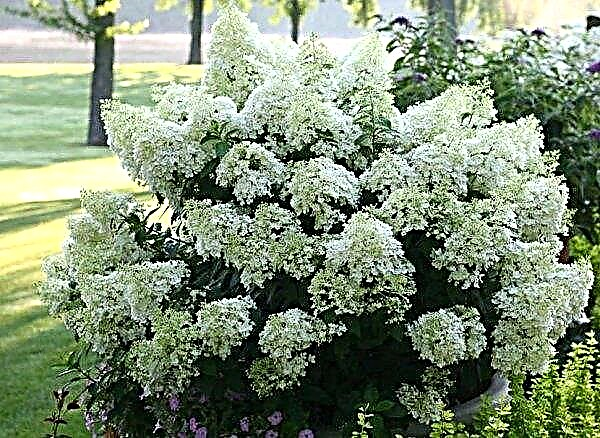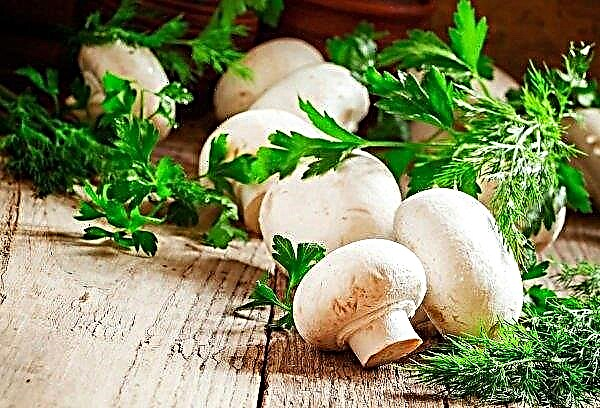Many farmers admit that keeping rabbits is not only a profitable, but also time-consuming part of livestock farming. These animals are demanding of the conditions of detention, temperature and diet. Wintering rabbits is a separate item on this list.
Can rabbits be kept outdoors in winter?
Due to the thick fur, rabbits tolerate low temperatures well. However, they also need to create special conditions of detention if you want to protect them from frostbite and disease.
Benefits
- The main advantages of the outdoor placement of rabbits in the cold season are as follows:
- frosty air is useful for strengthening the immunity of animals;
- warming existing cells and mother cells, subject to the right approach, will cost less than building a winter rabbitry;
- most infections die outdoors;
- there is no ammonia vapor and animals breathe quality air.
Disadvantages
- There are also disadvantages that, upon closer examination, are very specific and do not have a radical influence:
- too low temperature, on the contrary, will undermine the immune system (rabbits can survive frosts down to –30 degrees Celsius, but such extreme options are undesirable);
- if you plan to get “winter” offspring from rabbits, you will have to artificially extend their daylight hours, and this is an additional cost for lighting;
- it is necessary to regularly warm up water for animals.
Keeping rabbits in winter
There are three factors that the owner should not forget about: humidity, drafts and temperature changes. Humidity is over 70% (and this happens during warm, slushy winters), purged cells and jumps from frost to puddles can damage the health of pets. Remember that ill-conceived winter conditions lead to colds and weight loss.
Outdoors
As already mentioned, thirty-degree frosts are not afraid of rabbits. This is facilitated, in particular, by good insulation of the cells. The free space between the walls of the barn and the cells themselves is best filled with natural thermal insulation: dried leaves, straw, branches or moss. You can use artificial material, for example, felt, but it is economically disadvantageous and not environmentally friendly. The floor is laid with thick wooden boards to protect against freezing. In the cells, the netted bottom is covered with a pile of straw. The larger it is, the better: rabbits warm the straw with their breath, and the heat remains for a long time.
The free space between the walls of the barn and the cells themselves is best filled with natural thermal insulation: dried leaves, straw, branches or moss. You can use artificial material, for example, felt, but it is economically disadvantageous and not environmentally friendly. The floor is laid with thick wooden boards to protect against freezing. In the cells, the netted bottom is covered with a pile of straw. The larger it is, the better: rabbits warm the straw with their breath, and the heat remains for a long time.
Important! If possible, for better thermal insulation rabbit houses can be raised on wooden poles by 75—80 cm above the ground.
Outside, the cells are also insulated, and also sheathed with galvanized iron (sheets, overlapping). This prevents moisture from getting inside the houses when it snows or it rains heavily. When frosts reach threatening temperatures, you can cover the cells with padded jackets and other warm things.
The so-called queen cells, that is, cages that contain nursing rabbits and small rabbits, are equipped with special care. Rabbits breed at a temperature of 20-25 degrees below zero, therefore, for a safe fencing, relative heat, light and access to fresh air are needed. The cell is insulated with polystyrene or agrofloor, avoiding gaps in the nest box. Thick cardboard or oranite is laid on the floor, and already a thick layer of straw spreads on it.
Cells are best placed on the south side of buildings. If you put them in rows, facades to each other with a small functional passage, then, for example, the roof from the wind can be made common. It will also be convenient to mount the lighting.
The transfer of cells to the room
Severe frosts, as well as small frosts, but with high humidity, can make adjustments to the street keeping of fluffy pets. If the owner sees that warming rabbit cages and other measures do not save the animals from hypothermia, he can bring the cages into the barn or any other unheated, but closed room. The walls will reliably protect from the wind and smooth out the effects of frost. It is not worth moving animals to the house. Firstly, sudden changes in temperature are even more dangerous for their organisms than cold. Secondly, they tolerate heat worse, and rabbits can even stop feeding young animals.
It is not worth moving animals to the house. Firstly, sudden changes in temperature are even more dangerous for their organisms than cold. Secondly, they tolerate heat worse, and rabbits can even stop feeding young animals.
It’s not worth it to feed rabbits to cattle, because stale air can injure them and even lead to death. Also, avoid noisy sheds, as cock cries, dog barking and other sounds scare rabbits, especially nursing mothers.
Did you know? The longest rabbit ears fell into the book of records straight from the United States - in Wichita in 2003 there lived a rabbit with ears 79 cm long!
Winter diet
In summer, the rabbit's diet is fresh: juicy greens, various plants. To the cold weather, the owners buy compound feeds, harvest hay, roots, root crops. In order for all this to serve as food in the winter, it is important to dry the hay correctly, preventing its rot or mold. Bad hay is guaranteed to provoke an epidemic of gastrointestinal diseases.
In order for all this to serve as food in the winter, it is important to dry the hay correctly, preventing its rot or mold. Bad hay is guaranteed to provoke an epidemic of gastrointestinal diseases.
Did you know? Rabbits do not like rye, but if the owner considers it a necessary ingredient, then it includes no more than 10% of the total amount of feed. Rye causes bloating.
Feeding
The transition to the winter diet is carried out gradually, so that the animal body has time to get used to. With the onset of autumn, oats and barley are added to the diet, you can diversify the menu with offal from wheat. In winter, fluffy pets can be pampered with boiled potatoes and bran. They will also be happy to gnaw stale bread. When giving grain, remember that it must be dry. Cabbage leaves, which are strongly associated in many with rabbit-like, need to be given little by little - this product can provoke pain in the stomach. But on the addition of dried nettle leaves to the food, pets will respond to you with good health and stable weight gain.
In winter, fluffy pets can be pampered with boiled potatoes and bran. They will also be happy to gnaw stale bread. When giving grain, remember that it must be dry. Cabbage leaves, which are strongly associated in many with rabbit-like, need to be given little by little - this product can provoke pain in the stomach. But on the addition of dried nettle leaves to the food, pets will respond to you with good health and stable weight gain.
We must not forget about the lack of vitamins in the winter. Their shortage is well compensated by mineral complexes, as well as completely natural additives. These are mainly fruit tree branches. For example, apples and pears stimulate the digestive tract. Oak, birch, aspen and maple branches with leaves will come in handy. Conifers (pine, spruce) are also useful to give in winter. But the branches of cherries, plums and apricots can not be given in any case. Poplar shoots are also dangerous for rabbit health.
Important! Peach branches are poison for rabbits! Giving them a nibble is strongly discouraged.
Feeding is carried out twice a day. The exception is only young and lactating females - they are supposed to eat three meals a day.
Find out also

A properly organized diet and a balanced diet will help your rabbits wintering on the street spend calories not only on heating, but also on weight gain. Coarse food will help the stomach better absorb food, and vitamins and minerals along with frosty air will enhance health.
Watering
Drinking is very important for the good absorption of nutrients and vitamins. Without water, the animal begins to molt, kidney problems appear, weight is lost. A nursing rabbit without water loses lactation.
The biggest difficulty that farmers face is the installation of drinking bowls in winter. Water for rabbits must be constantly warm, and various devices are invented for this. The most popular are heated drinking nipples, since you can make such a system yourself. This is less expensive than buying a ready-made system, and also saves time that would have to be spent on heating and distributing water several times a day. The essence of such a drinking bowl in an external (not immersed) heating element, connected to drinking bowls arranged in cages, using special hoses. There are also vacuum and main electric drinkers. Their main drawback is the power consumption, for which you have to pay.
There are also vacuum and main electric drinkers. Their main drawback is the power consumption, for which you have to pay.
Important! If you yourself warm and bring water to the rabbits, remember that the drinker should not be metal. Otherwise, the water will cool too quickly.
Regarding the fact that instead of water to give rabbits snow, the opinions of even experienced breeders differ. Some believe that it is useful and along with frosty air strengthens the immunity of animals. Others, on the contrary, claim that the rabbit's body spends too many resources on heating, and if you drink it with cold snow, this increases energy consumption and, accordingly, affects the gain. The compromise, as always, is somewhere in between. During the day, you can warm and add water several times, and at night hang a piece of salted ice, which animals will lick and quench their thirst.
For every kilogram of feed, 1-1.5 liters of water are consumed. Rabbits and their nursing mothers can drink up to 2 liters.
Okrol in the winter
During the year, the young rabbit will give birth four times. Provided that you take a responsible approach to this issue and provide conditions for an okrolyan even in winter and even in street conditions. In addition, winter okrol allows avoiding compacted okroly, when in pursuit of profit the owners sacrifice the health of rabbits, letting them in a mating just a week after giving birth. But it can only be planned by experienced farmers that are not the first to breed these animals. It is a well-known fact that rabbits tolerate cold better than heat. This is also an argument in favor of winter mating. Preparing for childbirth, the cells are additionally insulated, creating comfortable, draft-free, but ventilated mother liquors. Sufficient space is an important condition, cramped cells do not contribute to the removal of offspring. A rabbit can even crush cubs if there is too little space. You also need a lot of light so that animals do not lose interest in mating. In winter, daylight hours are short, so you have to think about artificial lighting, at least for the period of mating. Another tip: do not spare the straw. It’s best to put her enough so that her mother can make a nest there and sit comfortably.
Preparing for childbirth, the cells are additionally insulated, creating comfortable, draft-free, but ventilated mother liquors. Sufficient space is an important condition, cramped cells do not contribute to the removal of offspring. A rabbit can even crush cubs if there is too little space. You also need a lot of light so that animals do not lose interest in mating. In winter, daylight hours are short, so you have to think about artificial lighting, at least for the period of mating. Another tip: do not spare the straw. It’s best to put her enough so that her mother can make a nest there and sit comfortably.
To protect against wind make awnings. If frosts grow stronger and threaten 30 degrees below zero, you can transfer the mother liquors to the barn, for example, where the temperature will be higher than on the street.
Disease
We already mentioned in this article that street rabbits are not afraid of infectious diseases in winter. But there are several typically winter diseases, which are also quite dangerous. Let's consider some of them further.
Frostbite
Even a warm “fur coat” does not save rabbits from drafts, especially if the temperature in the street drops to 20 degrees below zero. Ears and paws are frostbite in the first place. The animal is anxious, trying to lick the affected skin, takes intricate poses.
Stage of frostbite:
- First. It is characterized by redness of the skin areas and swelling of their individual parts. In this case, the animal must be brought into the house, treat it with fat wounds.
- Second. Blisters appear. Handle places where the bubbles burst, you need camphor oil.
- Third. Occurs with prolonged exposure to adverse factors. The skin of the animal wrinkles and dries. Without a veterinarian, nothing can be done at this stage.
Important! Warmers and other heating elements to rabbits are contraindicated!
Rhinitis
Rabbits can catch a cold rhinitis in the cold season. Its main features are:
- mucous discharge from the sinuses;
- periodic sneezing;
- apathy;
- loss of appetite.
 In addition, infectious rhinitis can occur in rabbits. With it, the discharge from the nose already has a color, either greenish or whitish. The disease is contagious, and without the help of a veterinarian you can not cope with it.
In addition, infectious rhinitis can occur in rabbits. With it, the discharge from the nose already has a color, either greenish or whitish. The disease is contagious, and without the help of a veterinarian you can not cope with it.Subdermatitis
From a cold, a rabbit may have bloody corns on its feet, or pododermatitis. At low temperatures, the wounds heal for a long time, causing pain to the animal. The treatment is the same as in the cases described above - a warm room, good nutrition with vitamins and treatment of wounds. Consultation with a specialist in this case will also not be superfluous.
The treatment is the same as in the cases described above - a warm room, good nutrition with vitamins and treatment of wounds. Consultation with a specialist in this case will also not be superfluous.
Breeding rabbits is a profitable occupation. A responsible approach, a little work and care will bring you not only the joy of communicating with these wonderful animals, but also economic benefits. Do not forget about the proper nutrition and keeping of animals in the winter, and your economy will flourish even in such harsh conditions as frosts –30 ° С.

